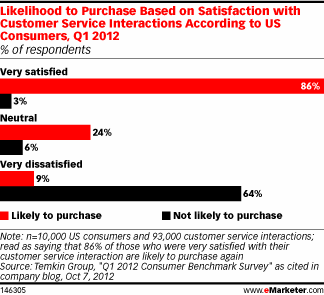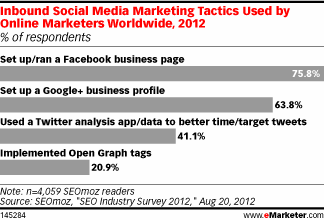Old habits die hard: most top 50 brands not social
The more things change, the more they stay the same, 15 years ago, brands had static websites and a unique way to interact with their followers through email or phone, what did they do? They remove phone numbers, addresses and email from their websites.
Fast forward 15 years, in the social media era, most brands have not changed. reminiscent of their old ways, they block followers from initiating conversations and/or only allow them to respond to posts.
In short, brands are still afraid or at best awkward when it comes to one on one communication. They are still stuck in their old broadcasting ways, using social media as a one way communication tool.
According to an A T Kearney study, out of Interbrand’s Top 50 Global Brands on Facebook,
- 27 of them won’t even reply directly to their customers
- 20 of the 50 companies have a 4:1 company to customer ratio of posts on their Facebook pages.
- 71% of the company posts were promotional
- Only 5% of all posts actually sought to create real conversation with their customers
Companies as consumer-facing as Disney, McDonald’s, and Sony only allow posts that were created by the companies themselves
- Only one of the Interbrand Top 50 routed fans to an unfiltered Facebook wall, while the other 44 initially choose to show consumers and fans a filtered selection of company posts only.
- Of the more socially engaged companies, 25 companies in our study had consumer-to-company post ratios in the 3:1 range—three consumer posts for every one company post. These companies include Coca-Cola, BMW, eBay, H&M, Kellogg’s, Pepsi, Heinz, ZARA, NESCAFÉ, Nintendo, Amazon.com, Nokia, Honda, Gillette, Philips, HP, Samsung and L’Oréal Paris. The remaining 20, however, demonstrated nearly a 1:4 ratio between consumer and company commentary.
- Only 5 percent of company-to-consumer posts engaged consumers in discussions, while 71 percent of posts were promotional
Most traditional marketers are still not comfortable engaging consumers one on one and default to their traditional ways. they are afraid to lose control of their message and brand and do not understand the dynamics of social media and as a result, budgets may not be available to hire dedicated social media staff or dedicate employees to interact with consumers.
Most brands consider social media to be exclusively a marketing tool and lose sight of the value social media conversations bring to other departments like customer service, R&D, quality, HR to mention only a few. As such, social media can considerably cut customer service costs, development time, correct product or service defects faster, attract valuable talent in a more cost effective way and fail to include these savings and/or revenue generation in the overall ROI
Can you teach an old dog new tricks, sometimes, but past behaviors and trends are not exactly encouraging most top 50 brands succeed at generating “likes” and followers but fail at social engagement and miss out on the real value of social media.





 The rise of the internet has meant big changes for customer service, according to a new eMarketer report, “Multichannel Customer Service: Best Practices for Building Retail Loyalty.” Consumers today have an array of digital customer service tools at their disposal, the newest of which include live chat, social networks and smartphones.
The rise of the internet has meant big changes for customer service, according to a new eMarketer report, “Multichannel Customer Service: Best Practices for Building Retail Loyalty.” Consumers today have an array of digital customer service tools at their disposal, the newest of which include live chat, social networks and smartphones.

